by Stuart Urback
What is it?
Sagrada is a board game and mobile app about building beautiful stained glass windows by placing colored dice in a 4x5 grid. Between two and four players can play the base game, but up to six can play with the expansion, and the digital game works for single player games. Each round, the group rolls dice, and then takes turns picking the dice to place on their grids. Dice placement must follow two simple rules: 1. Dice must be placed so that they’re connected to a die that’s already been placed. 2. Dice cannot be placed adjacent to a die of the same color or number.
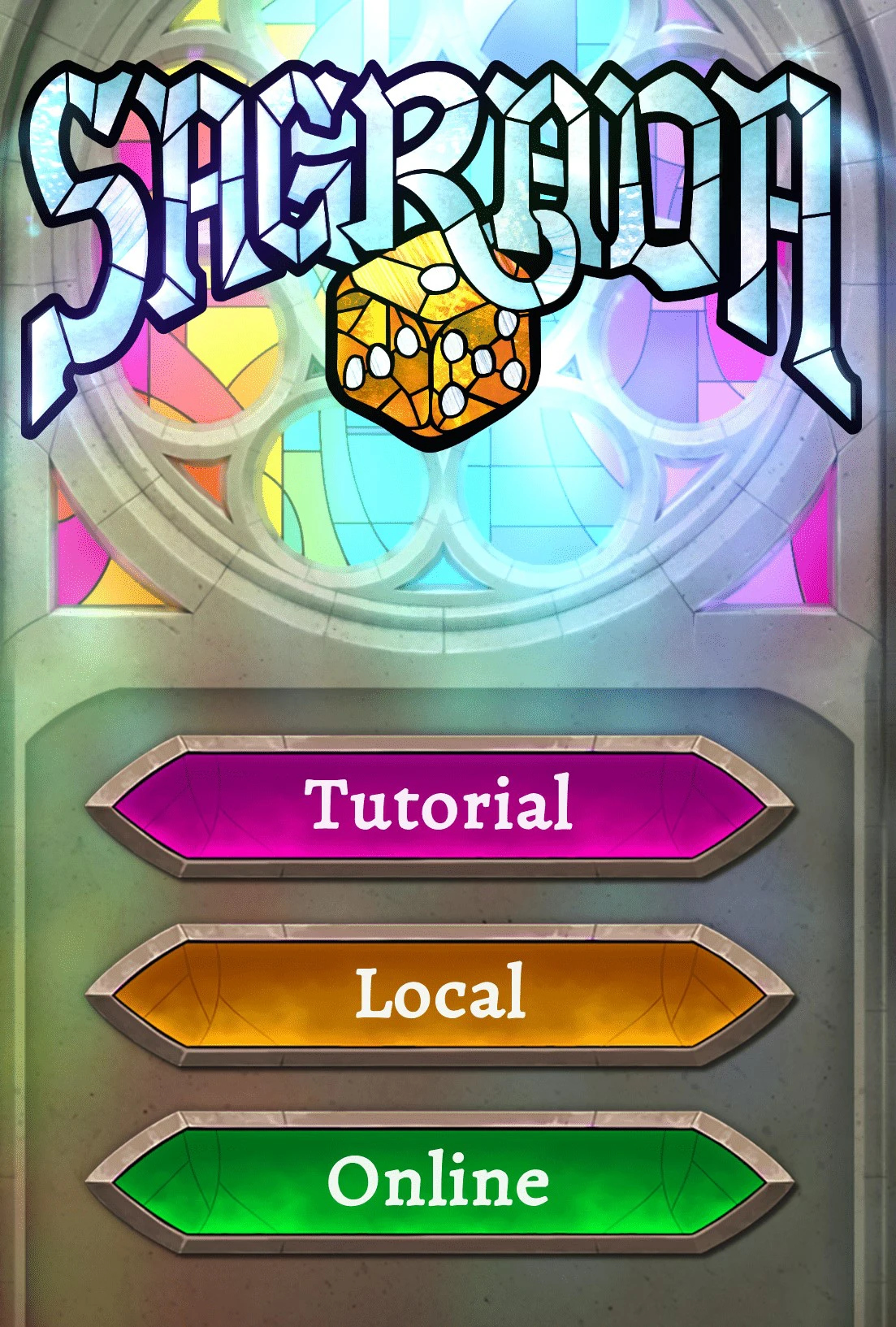
You will score at the end of the game based on a variety of criteria, having rows or columns of different numbers or colors, counts of dice of a certain color, or pairs of certain numbers (i.e. groups of 1 + 2). The puzzle of the game is trying to maximize your score based on the limited amount of information in front of you. Conceptually the game is relaxing as you are limited by the moves you can take (it is impossible to impact your opponents' boards), and the only real tension is in which dice will get rolled and whether or not an opponent will snatch a die you wanted away from you.
The Physical Game
The first time I played Sagrada using real dice and cardboard. I found myself enjoying the game conceptually but disappointed by its execution. The components were small, the dice were smaller than your average 6 sided die (probably to save on cost and space), but it resulted in making it hard to manipulate the pieces into their proper orientation, and all too easy to accidentally bump or drop a die into the wrong configuration.
With some games, waiting between turns can be a lot of fun. You can smack talk your opposition. try to figure out how you might respond, or enjoy discussing an interesting concept related to the game. In Sagada, with all of the pieces laid out, there was no suspense to see what other players had built (or any visceral reaction from seeing it).
In Sagrada, you needed enough focus to pay attention to your board, but there was little reason to pay attention to what anyone else was doing. It felt like the board game equivalent of people at a table staring at their phones. The turns in Sagrada are fast, but feel like they dragged forever. Because when a new round started, it was pretty easy to pick out which two dice you would want to place, you could rank them and then wait to take your turn.
Each time I would go to the game store, I found myself considering it, but never making the purchase. It was hard to imagine a situation where I would play the game, at least, not, until the digital game released.
The Digital Game
The digital version of Sagrada feels more like a puzzle than a game. Playing the game digitally against other players feels less like a battle of wits, and more like sudoku or a crossword puzzle. The game’s layout, a 4x5 grid, feels like it was built for a phone screen, and the concepts are displayed across the screen in a way that presents the important information at the point that I care about them. The illustrations that explain the rules are tappable to open up a card that explains the specific rules.
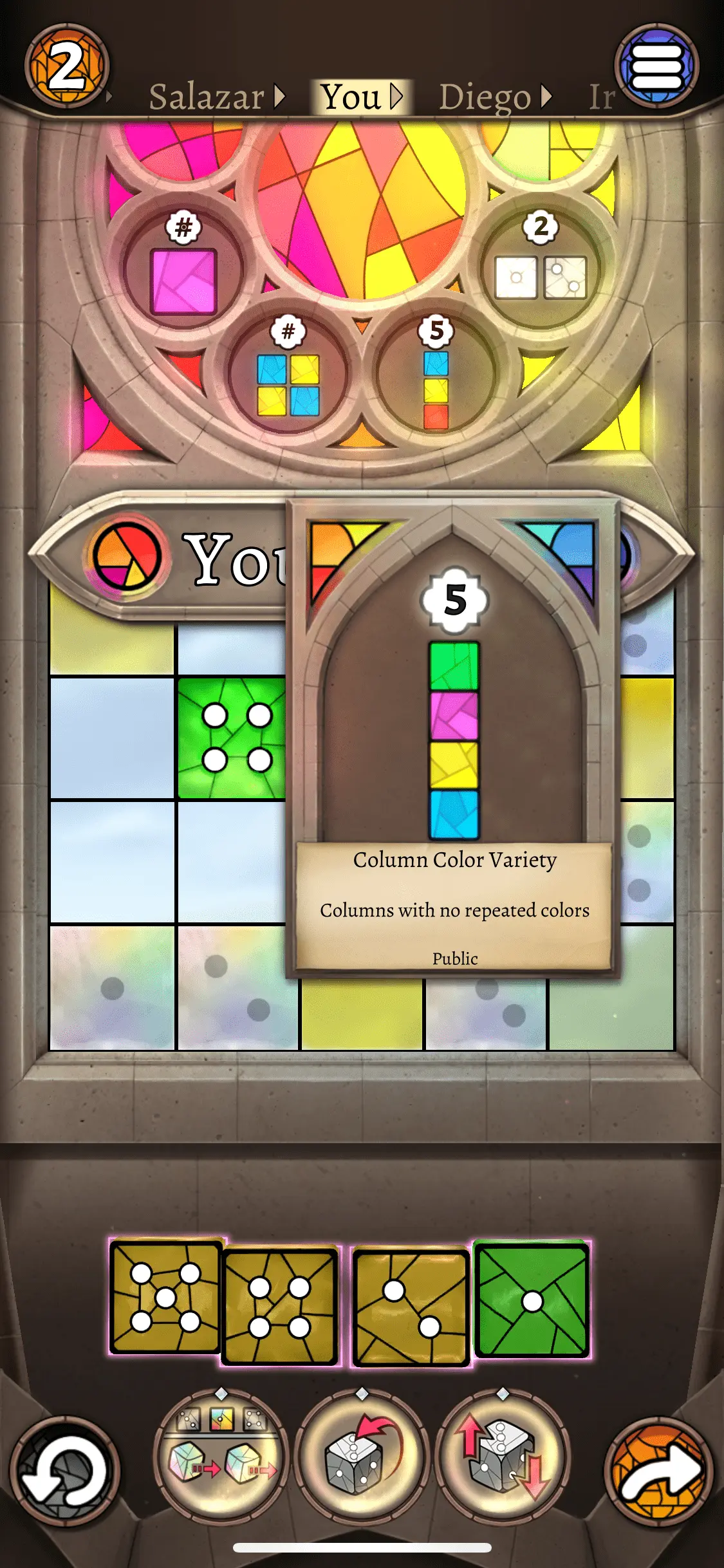
The campaign version is also quite clever. Sagrada has an additional twist, different “expert” level grids that further constrain the colors or the numbers that can be placed on certain squares. The campaign takes each of these grids and asks players to complete them against the computer opponents. It adds a fun level of progression and novelty to a game that might have limited replayability otherwise, and has kept me coming back for a quick play when I’m in the mood to solve a puzzle.
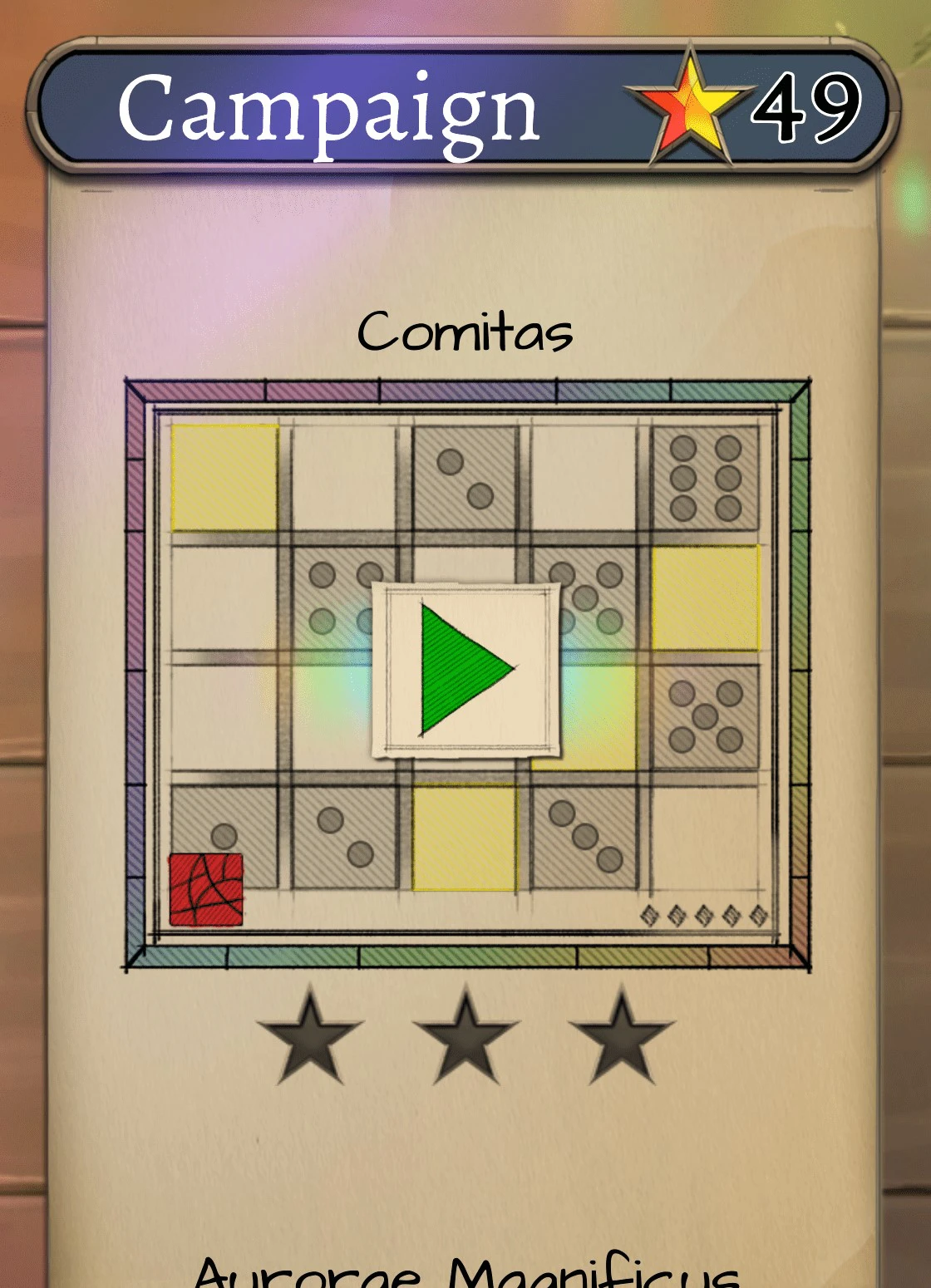
The asynchronous mode was also delightful. For some digital board games, the asynchronous nature can be a challenge, having to re-orient yourself to the state of the game each time the app opens up, can suck a lot of the fun out of an experience. But for Sagrada, because I didn't have to care about what other players were doing on their turns, I was free to enjoy it as is, focusing on me and my stained-glass window. Both the AI games, which I was able to complete in 5 minutes, or the online multiplayer, felt more like playing Sudoku, or The NYT Crossword, which I was quite ok with.
Accessibility Notes
It feels important to note that Sagrada, as a game about colors, is likely going to be challenging for players who are color blind, though it seems like there are somehacks you could use to make it work. The physical game doesn’t have any accessibility enhancements, but the app does have a “color blind” mode in settings that adds some texture to the colors, but the textures seemed to be pretty small to me.
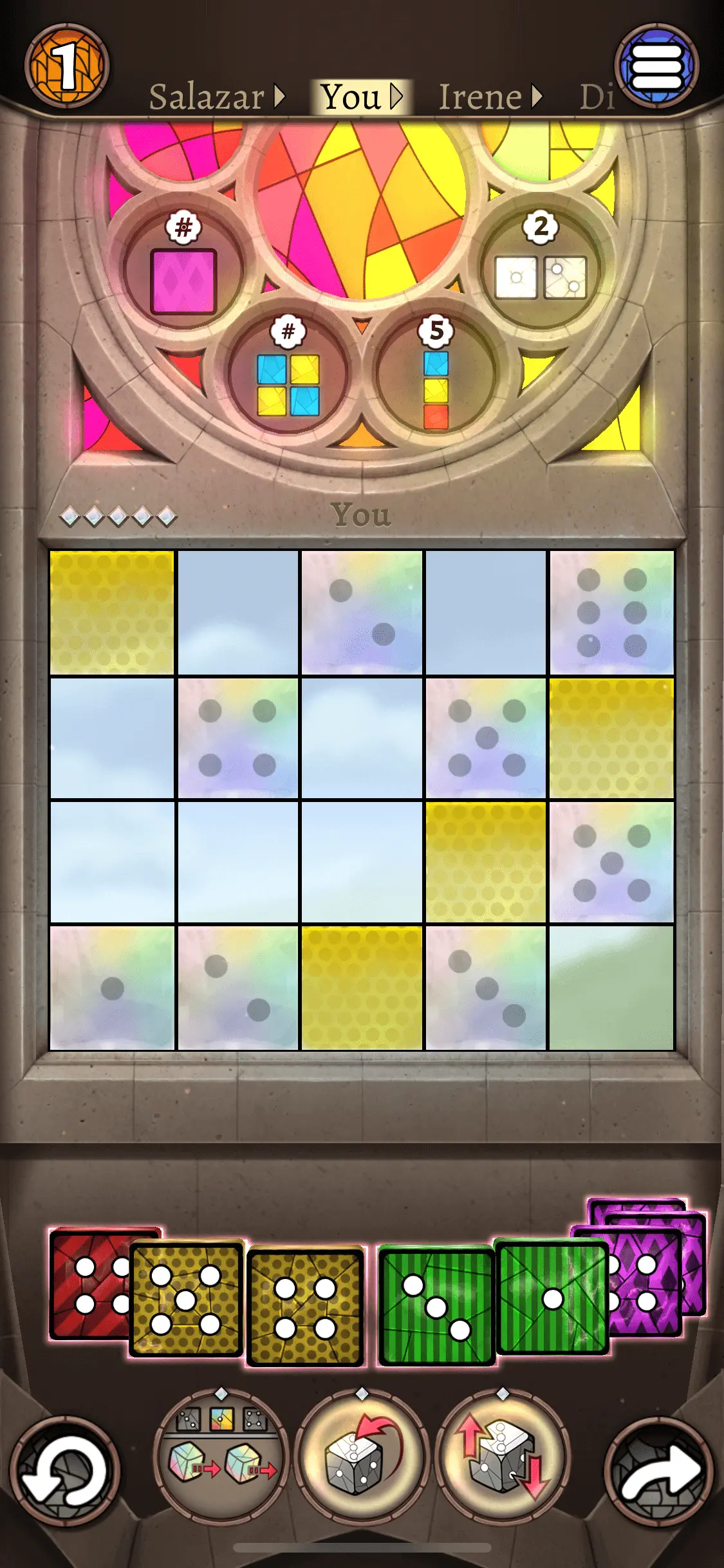
The game also has a confusing system for naming, where they call different numbers “shades” of a color. So a Blue - 1 is a different “shade” than Blue - 6. While I understand the desire for thematic consistency, such a naming convention is likely to compound any issues players might have understanding the game.
Going Further
It's possible that there's a deeper level of strategy to Sagrada that I didn't capture, or a challenging multiplayer scene that I didn't interact with. But for me, enjoying a modestly taxing puzzle for the 5 minutes before bed has been a peaceful way to wind down in the evenings.
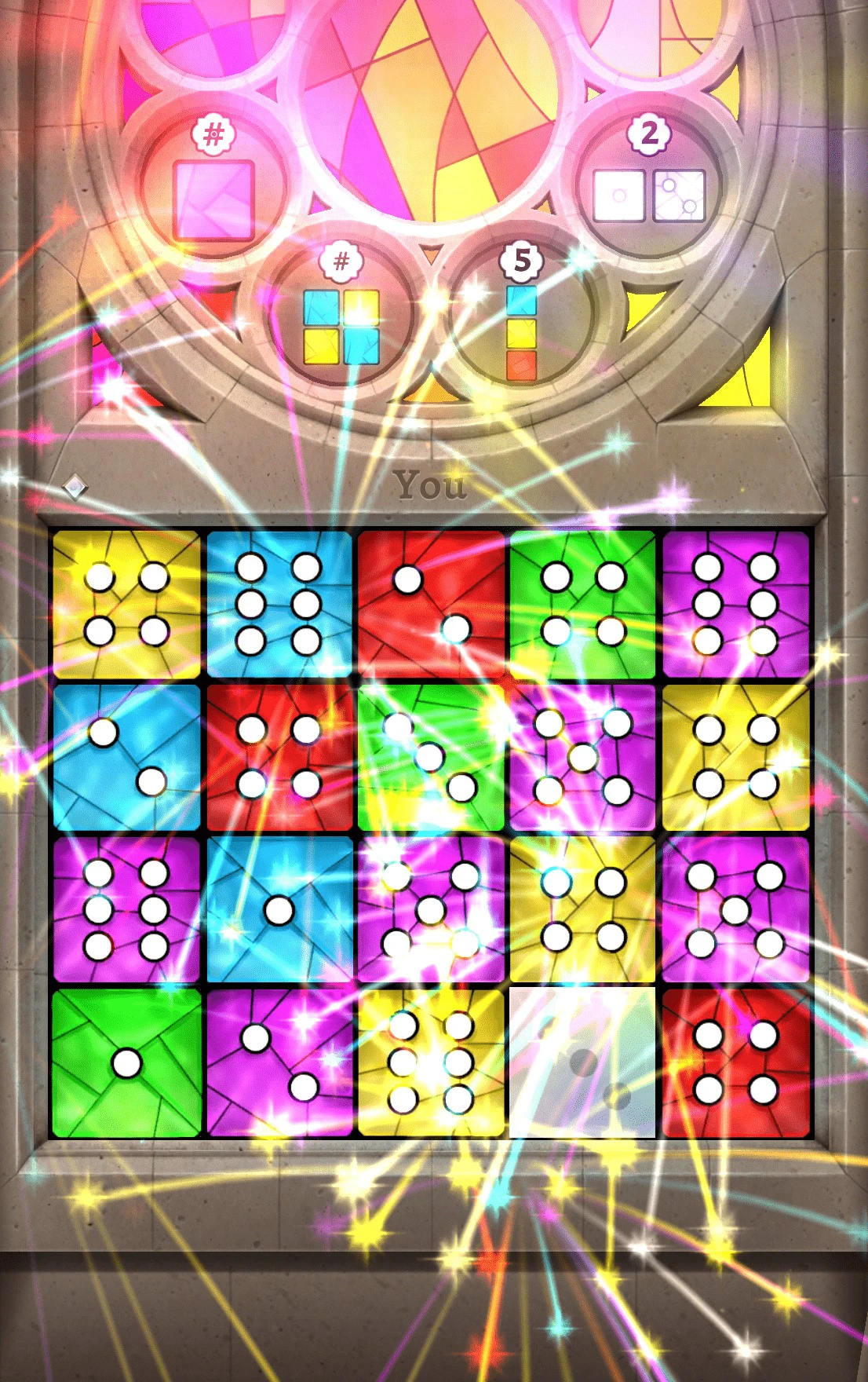
If you love puzzle games, like I do, I'd recommend the NYT Crossword (which is available via subscription ~$20 a year). Their Daily Mini is one of my favorite ways to spend 1-5 minutes and you get the benefit of the warmth of supporting great journalism with your money. If you're looking for something more math-focused I might recommend the small mobile game Turning (available on Web, iOS, and Android) or the two-player card game Lost Cities (available digitally or physically).
The opinions in this post are expressly the views of the author and do not reflect the views of their employer(s) or any entities that they might otherwise be affiliated.